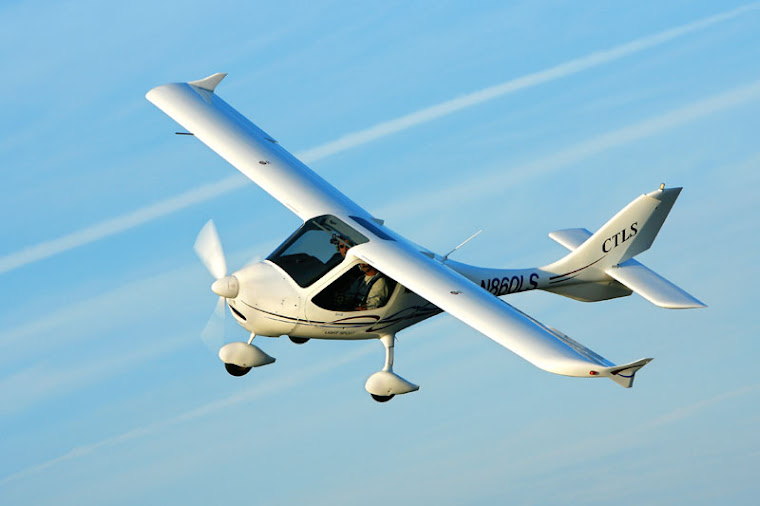The Sport Pilot certificate or license is a fairly new category of pilot created by the Federal Aviation Administration (FAA) back in 2004. In fact, it has been called "the biggest change in aviation in 50 years." The primary purpose behind creating this new category is to promote and encourage recreational general aviation (aka Recreational Sport Flying) by dramatically reducing the cost of learning to fly.
A Sport Pilot License is much less expensive and easier to obtain than a Private Pilot's license, making it very affordable and achievable for the average person. This is possible because it requires half the time to complete. A Sport Pilot license requires only 20 hours minimum training (combined ground and flight instruction) versus 40 hours minimum training for a Private Pilot's license. However, a Sport Pilot is by no means trained to lower standards than a Private Pilot. The piloting and mastery of a recreational aircraft is fundamentally the same. The difference is - there are some slight limitations on Sport Pilots versus Private Pilots due to the nature of recreational sport flying and its lower demand on piloting and cockpit management. The age requirement remains the same as obtaining a Private Pilot's license. You can solo at age 16 (fly by yourself during training), and obtain a license at age 17 (act as PIC or Pilot-In-Command). And there is no upper age limit for the Sport Pilot license. Note: additional training hours may be required to establish proficiency in a light sport airplane type and/or model.
A Sport Pilot license allows a pilot to fly aircraft that are certified under a complementary aircraft category called Light Sport Aircraft (LSA). The LSA category comprises several sub-categories: fixed-wing airplanes including ultralights, weight-shift control trikes, powered parachutes, gyroplanes, gliders, etc. This blog focuses on fixed-wing airplanes, the most popular type – and more specifically on Special Light Sport Aircraft (SLSA).
Another benefit of the Sport Pilot license is that it allows you to use a valid U.S. driver's license as evidence of medical eligibility in order to operate an airplane SLSA. The same restrictions (i.e. wearing glasses, etc.) that apply to your driver's license also apply when you fly a light sport airplane as a Sport Pilot. In other words, your driver's license can be used in lieu of having to complete a flight medical examination (a 3rd class medical exam is required for a Private Pilot's license) to establish medical fitness. Of course, every pilot must use sound judgment before any flight, and determine if he or she is medically fit to operate an aircraft safely.
Bottom line: becoming a pilot is now more affordable and achievable – for age-ready youth, baby boomers, and recreational powersports enthusiasts alike – than ever before! What are you waiting for? Isn't it time you stopped dreaming? Join the Recreational Sport Flying Revolution and become a Sport Pilot today.
Sport Pilot Limitations
• Flying only using Visual Flight Rules (VFR) - flying by visual ground reference in good weather conditions (requires 3 statute miles flight and surface visibility, including visual contact with the ground).
• Flying only at altitudes below 10,000 feet above sea level or 2,000 feet above ground level, whichever is higher.
• Flying only during daytime hours - no night flying is allowed.
• Flying only to airports in the U.S. (with proper endorsements) - recreational sport pilots usually fly to and from non-towered airports, remote airstrips or natural terrain and/or water locations (i.e. floatplane equipped SLSA).
• Flying only in designated airspace that may require minimal communications with air traffic control.
• Cannot carry more than one passenger.
• Cannot carry passengers for compensation or hire.
• No flying in furtherance of a business.



No comments:
Post a Comment